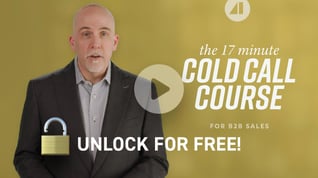The following sales strategies are generally underrated, overlooked, or ignored. In some cases, they are highly unpopular in a world that is enamored with transactions, immediate gratification, and technologies that promise efficiency, a promise that is mostly a lie. These four strategies are also battle-tested, which is to say, have passed the test and created a competitive advantage.
When you sell, you are trying to create a preference to work with you and your team, excluding your competition. What I mean when I write about value creation is your approach, your strategy, and your ability to be consultative.
Shaping the Client’s View
Sadly, the sales profession is falling behind when it comes to shaping the client’s view of their problem and the potential solutions. Those who struggle still hold on to the belief that they are going to win large, complex B2B sales by relying on their company’s reputation and their solution. While these things may provide some small benefit, they do nothing to shape the prospective client’s understanding of their problem, what exactly they should do about it, or how they should go about changing.
You shape the primary question the client is asking by providing context that modifies the lens through which they view their problem, challenge, or opportunity (see Eat Their Lunch, Chapter 2) Can you help them make sense of their world and their business? Can you help them understand what their choices are and why they should choose one course of action over others?Win customers away from your competition. Check out Eat Their Lunch
We resist doing hard things.
Having a Physical Presence
Most salespeople—and the sales organizations for whom they work—are not interested in the strategy of showing up. The desire to be efficient with time, our changing communication preferences, and our desire to transact (i.e., Amazon.com), has salespeople mistakenly believing they can have the sales conversation over email.
At the very time I am writing these words, a salesperson I know has a scheduled meeting with a prospect in their prospect’s home office. She is meeting with them on her vacation. No one else competing for this business will have visited the client in their home office. What do you believe her chances of winning might be?
There is a tremendous competitive advantage to having a physical presence. You show you care enough to come and learn about the client and their needs. You get to meet the people who are making the decision, and you get to understand what they want from you. Even more, they get to see you writing down what they say, an indication that you are going to try to give them what they want.
The approach here is the opposite of what we might describe as the pen pal theory of selling.
Stealing Time
This approach is underrated, and mainly because there is little will to have a physical presence. Your prospective client is going to spend time with a few salespeople or sales organizations. Unless you are in an RFP and limited to one hour to sell (strategy here), you are competing for time.
My friends at Gartner shared with me that buyers spend something like 18% of their time working on a purchase with salespeople. Generally, each sales organization gets something like 6% of their time. The more time you command, the more time you have to sell effectively and create a preference to work with you.
In all things, you want an asymmetrical advantage. If you could double the time you spend with the client, you create a competitive advantage. You might also limit the time they have for your competitors. The strategy here is very much like clock management in a football game; if I have the control of the ball, I can keep you on defense and prevent you from scoring.
Defining or Revising the Process
Who controls the process wins. My second book, The Lost Art of Closing, is about controlling the process and ensuring your dream client makes and keeps the commitments necessary for making a good decision. The book is practical and tactical, even if the word “closing” frightens people into believing it is an old school, Glengarry Glenn Ross approach (it is, in fact, quite the opposite).No more pushy sales tactics. The Lost Art of Closing shows you how to proactively lead your customer and close your sales. 
When you are selling, you are helping your prospective client with a better outcome. Much of the time, they don’t know what they need to do or why they need to do it. So, they skip some of the commitments. They try to accelerate the process by having a single meeting and asking for a proposal, even though there are other conversations and decisions they need to have first.
The person who can define the process—or revise it—creates a competitive advantage. If your competitors are not having the same conversations and are operating from a model that suggests they follow the client’s lead, you create a gap between their experience with you and their experience with your competition.
Executing the 4 Strategies
It is unlikely that these strategies conflict with your sales process. Nor will they lessen the effectiveness of any of your sales methodologies. You won’t hear complaints from your sales manager (with the execution of a more considerable expense report from trips to meet clients), nor will your dream clients gripe about you spending time with them or helping them solve their problems.
What’s difficult about these strategies is changing your behaviors and doing the work.








.jpg?width=768&height=994&name=salescall-planner-ebook-v3-1-cover%20(1).jpg)


